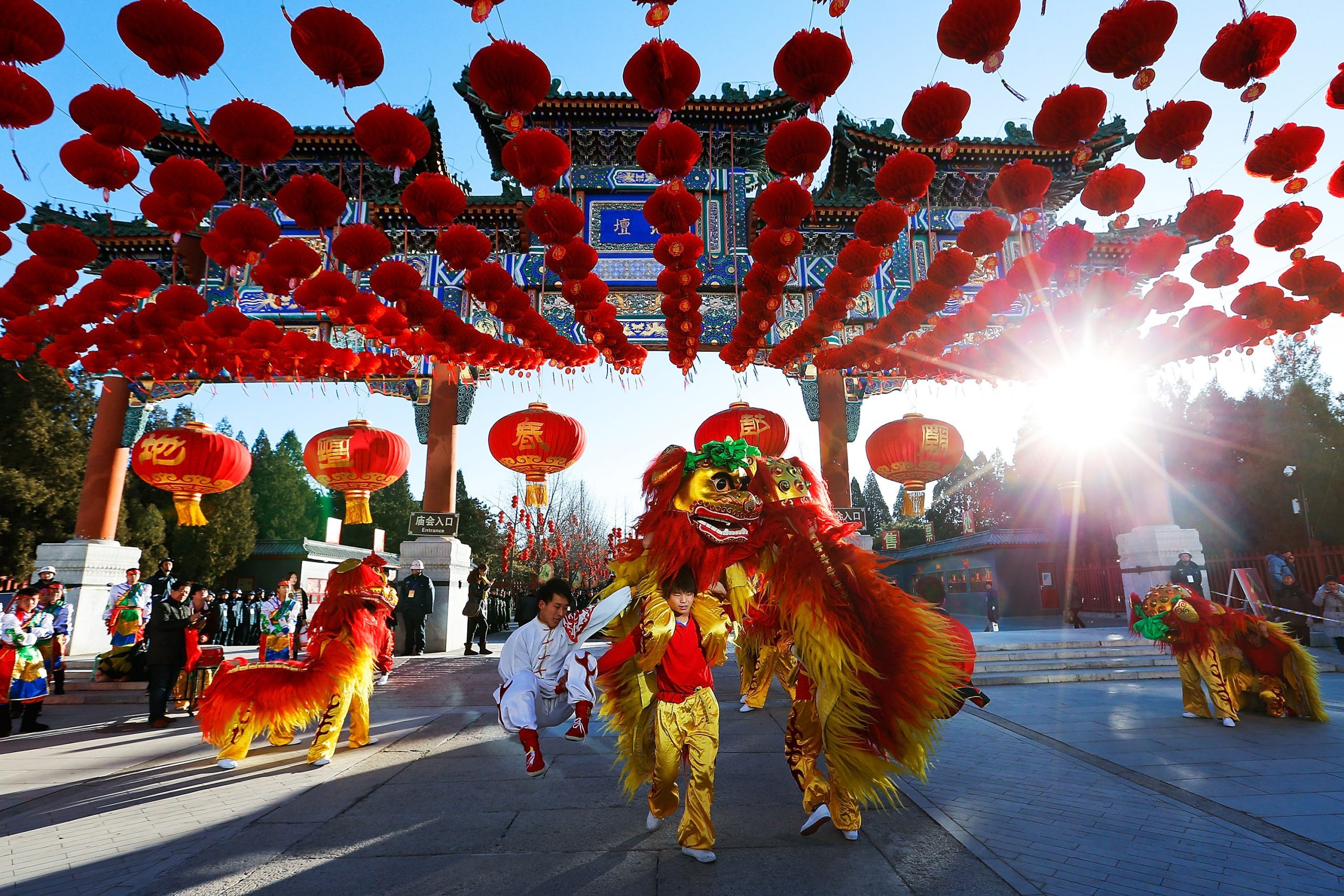
Lunar New Year, also known as Chinese New Year or Spring Festival, is one of the most important and widely celebrated cultural events in the world. This vibrant and joyous celebration marks the beginning of the lunar calendar and is celebrated by millions of people of Chinese, Vietnamese, Korean, and other Asian descent across the globe.
With rich traditions and colorful customs, Lunar New Year is a time for family gatherings, feasting on sumptuous foods, exchanging gifts, and praying for good fortune and prosperity in the coming year. From lion dances and dragon parades to lantern festivals and fireworks, this festive occasion is filled with excitement and cultural significance.
In this article, we will explore 10 fascinating facts about Lunar New Year celebration, shedding light on the history, symbolism, and unique customs associated with this auspicious event.
Key Takeaways:
- The Lunar New Year, celebrated across Asia, lasts for 15 days and is filled with colorful traditions, delicious feasts, and lively performances to bring in good fortune and blessings for the new year.
- Red is the prominent color, symbolizing good luck, and traditional gifts like mandarin oranges and snacks are exchanged to wish for wealth and prosperity during the Lunar New Year celebration.
The Lunar New Year marks the beginning of the lunar calendar.
The Lunar New Year, also known as Chinese New Year or Spring Festival, is celebrated on the first day of the lunar calendar, which typically falls between January 21 and February 20.
It is the most important traditional holiday in many Asian countries.
The Lunar New Year is celebrated across various Asian countries, including China, Vietnam, Korea, Singapore, and Malaysia, among others. It is a time for families to come together, honor ancestors, and wish for prosperity and good fortune in the coming year.
The Lunar New Year celebration lasts for 15 days.
Unlike the Western New Year’s celebration, which lasts for only one day, the Lunar New Year festivities continue for 15 days. The period is filled with cultural activities, fireworks, lantern displays, and lively street parades.
Red is the prominent color during the Lunar New Year.
Red is considered an auspicious color in Chinese culture and plays a significant role in Lunar New Year celebrations. It is believed to ward off evil spirits and bring good luck and fortune.
The Lunar New Year is associated with the Chinese zodiac.
Each Lunar New Year is associated with a different animal from the Chinese zodiac, which follows a 12-year cycle. The animal of the year is believed to influence the traits and destiny of individuals born during that year.
Mandarin oranges and traditional snacks are exchanged as gifts.
During the Lunar New Year, it is common to exchange gifts as a gesture of goodwill. Mandarin oranges symbolize wealth and good fortune, while traditional snacks such as almond cookies and rice cakes represent abundance and prosperity.
The famous lion and dragon dances are performed during the Lunar New Year.
Lion and dragon dances are an integral part of Lunar New Year celebrations. These vibrant and energetic performances are believed to bring blessings and chase away evil spirits.
The Lunar New Year feast is a key highlight of the celebration.
Family reunions during the Lunar New Year often revolve around a sumptuous feast. Traditional dishes such as dumplings, fish, and sticky rice cakes are enjoyed for their symbolic meanings of prosperity, luck, and unity.
Fireworks are set off to drive away evil spirits.
Fireworks have been an important part of Lunar New Year celebrations for centuries. The loud noises and bright lights are believed to scare away evil spirits and ensure a peaceful and auspicious year ahead.
Visiting and cleaning ancestors’ graves is a common practice.
Many families visit the graves of their ancestors during the Lunar New Year to pay respects and honor their heritage. It is also customary to clean the gravesites to show filial piety and maintain ancestral connections.
As we can see, the Lunar New Year is a vibrant and culturally rich celebration that holds deep significance in many Asian communities. From the festive decorations to the delicious feasts and joyous traditions, this annual event brings people together to welcome a new year filled with hope, blessings, and prosperity.
Conclusion
In conclusion, Lunar New Year is a rich and vibrant celebration that holds deep cultural and historical significance. From the mesmerizing dragon dances to the mouth-watering feasts, this festive occasion brings people together to honor traditions, show gratitude, and welcome a prosperous new year. Whether you are familiar with Lunar New Year or just discovering it, these 10 facts offer a glimpse into the beauty and diversity of this global celebration. So, join in the festivities, immerse yourself in the customs, and embrace the spirit of Lunar New Year!
FAQs
1. What is Lunar New Year?
Lunar New Year, also known as Chinese New Year or Spring Festival, marks the beginning of the lunar calendar. It is a major annual celebration in many Asian countries and cultures.
2. When is Lunar New Year celebrated?
Lunar New Year falls on different dates each year, usually between January 21 and February 20 in the Gregorian calendar. It is determined by the lunar cycle and the sighting of the new moon.
3. How long does Lunar New Year last?
Lunar New Year festivities typically last for 15 days, ending with the Lantern Festival. However, preparations and celebrations may begin weeks in advance.
4. What are some common traditions associated with Lunar New Year?
Common traditions include family gatherings, exchanging red envelopes with money (symbolizing good luck), cleaning and decorating homes, setting off fireworks or firecrackers, and enjoying festive foods.
5. What are the zodiac animals associated with Lunar New Year?
Each Lunar New Year is associated with a different animal from the Chinese zodiac. The animals rotate in a 12-year cycle, starting with the Rat and followed by the Ox, Tiger, Rabbit, Dragon, Snake, Horse, Sheep, Monkey, Rooster, Dog, and Pig.
6. What are some popular Lunar New Year foods?
Popular Lunar New Year foods include dumplings, fish, sticky rice cakes, longevity noodles, and citrus fruits. These foods are believed to bring good luck, prosperity, and abundance for the coming year.
7. Are there any traditional customs for Lunar New Year?
Yes, there are several traditional customs, such as hanging red lanterns, pasting red couplets on doorways, wearing new clothes to signify a fresh start, and visiting temples or ancestral graves to pay respects.
8. Are there any specific greetings for Lunar New Year?
Yes, common greetings include “Gong Xi Fa Cai” (Mandarin) and “Kung Hei Fat Choi” (Cantonese), which both mean “Wishing you a prosperous New Year.” “Xin Nian Kuai Le” is another commonly used phrase, meaning “Happy New Year.
9. Is Lunar New Year only celebrated in China?
No, Lunar New Year is celebrated in various Asian countries and regions, including China, Taiwan, Hong Kong, Singapore, Malaysia, South Korea, Vietnam, and more. Each country has its own unique traditions and customs.
10. How can I celebrate Lunar New Year?
You can celebrate Lunar New Year by attending local parades or festivals, trying traditional foods, participating in cultural activities, wearing red clothing, giving and receiving red envelopes, and spending time with loved ones to honor the spirit of the holiday.
Lunar New Year celebrations offer a glimpse into rich cultural traditions. Curious about other festive events? Explore vibrant festivals in Alameda, California, where diverse communities come together. Delve into the enchanting glow of Lantern Festival, a time-honored tradition. Chino Hills, California also boasts an array of cultural celebrations waiting to be discovered.
Was this page helpful?
Our commitment to delivering trustworthy and engaging content is at the heart of what we do. Each fact on our site is contributed by real users like you, bringing a wealth of diverse insights and information. To ensure the highest standards of accuracy and reliability, our dedicated editors meticulously review each submission. This process guarantees that the facts we share are not only fascinating but also credible. Trust in our commitment to quality and authenticity as you explore and learn with us.


